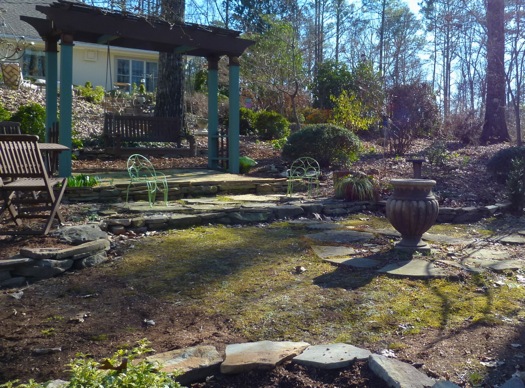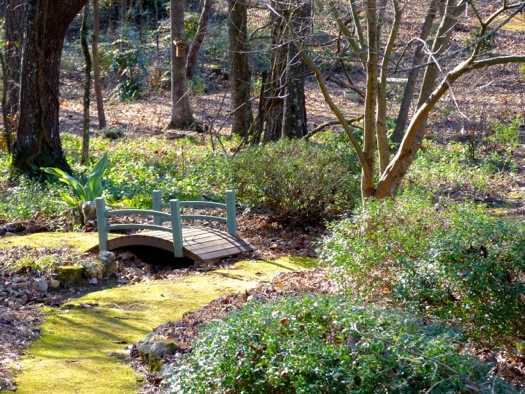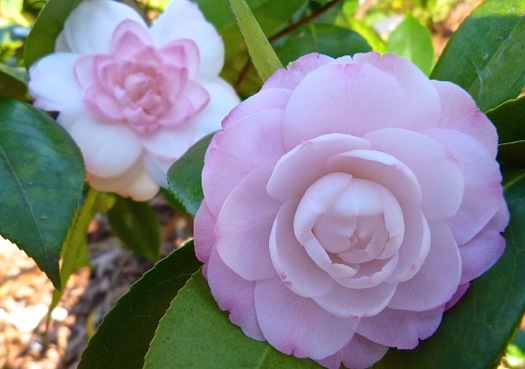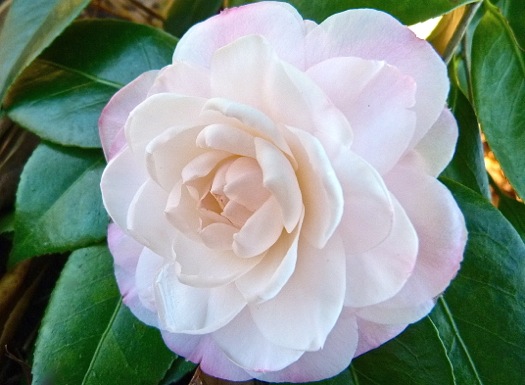My Garden Mistakes
 Sunday, February 14, 2016 at 3:50PM
Sunday, February 14, 2016 at 3:50PM I have been working on the rocks in the arbor garden. Again. They are dry-stacked to form low walls enclosing the planting beds, and I have been tinkering with them ever since I began this particular garden in 2009. After seven years I should have gotten them right, and maybe now I will. I have changed the shape of the planting areas several times, not knowing exactly what was wrong. This year I realized that rather than giving definition to the planting beds, my wimpy outline was merely a suggestion. I needed bigger rocks and more of them. I have also been resetting the large flagstones that form the patio area under the wooden arbor, bringing in bags and bags of sand and leveling the stones. I am not finished yet, but already I am happier with the whole space. Here is what it looks like today, in progress:
It is obvious that I did not know what I was doing when I began. If I had hired a stone mason, it would have been money well spent.
I tend to dive into a project with the gusto and optimism of inexperience and come out the other end humbled and much wiser. You bet I have made plenty of gardening mistakes over the years.
I have planted plants too close together, only to remove half of them when they began to encroach upon one another. This has not always been my fault. These dwarf Yaupon Hollies planted in the front garden, shown in the foreground here, grew twice as large as the three feet claimed on the tag: Now I know labels give averages for mature plants; the actual ultimate size depends on many factors.
Now I know labels give averages for mature plants; the actual ultimate size depends on many factors.
I once planted something called Viburnum augustifolium. It had lovely evergreen leaves, but I had no idea about its habits. It grew to about thirty feet tall. I came to call it Cancer Tree, because it produced abundant underground runners, which sent up new trees in all directions, rapidly metastasizing into nearby planting areas. Unchecked, this thing could have colonized the planet. We cut it down, and years later we are still spraying herbicide on new sprouts.
I watched a parade of hydrangeas and azaleas choke to death on my clay soil before a wise woman told me to improve the soil by adding lots of soil conditioner to my planting holes. Wow! What a difference this has made. I also discovered that my soil is going to be acidic no matter what I do. I can sweeten it temporarily by adding lime, but it is easier to plant acid-loving plants, or else grow the plants in raised beds or pots.
One mistake that did not happen: Originally, I almost painted my little woodland bridge brown! I debated over the color, thinking blue would be too bold for its wooded setting. But I wanted blue; and once I put it in place, I knew it was just right. Even in the depths of winter, it brightens the area, and it compliments the moss path perfectly:

So do I regret all the mistakes? Certainly I hate to waste money. Education and prior experience help to minimize blunders, but "mistakes" are going to happen in the garden. Gardens are as individual as their makers, and the books don't cover everything. I have learned not to moan too much over my mistakes, but to learn from them. It is all part of the process.



